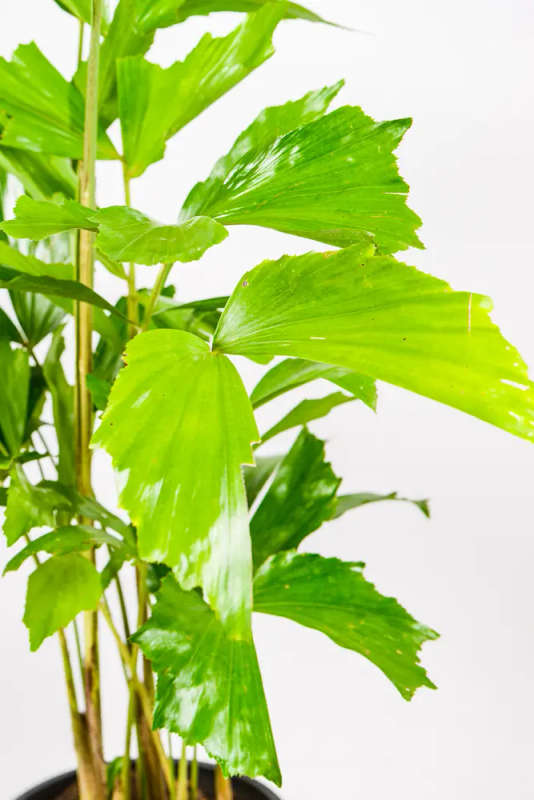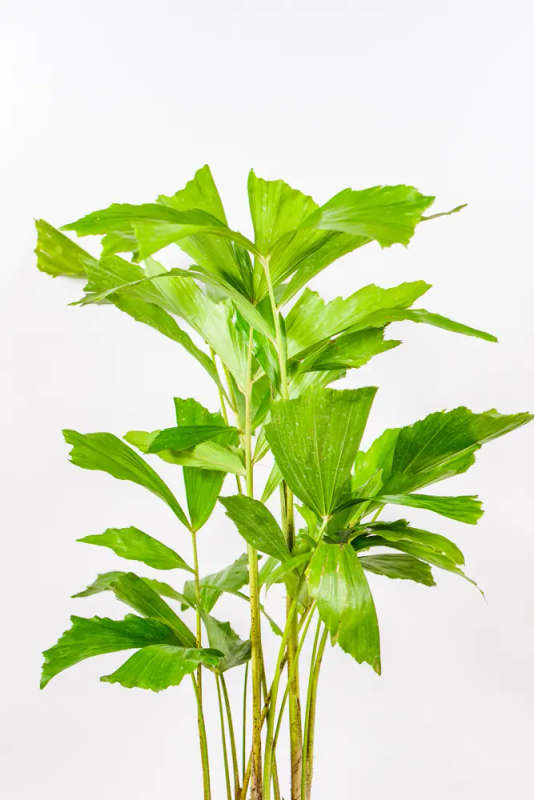







Fish Tail Palm
Check my rate
| Main centres: | 1-3 business days |
| Regional areas: | 3-4 business days |
| Remote areas: | 3-5 business days |








| Main centres: | 1-3 business days |
| Regional areas: | 3-4 business days |
| Remote areas: | 3-5 business days |
The Fish Tail Palm is a great pick if you're after something a little different. Instead of the usual palm fronds, it has foliage shaped like fishtails���giving it a more textured, layered look. It adds a bold tropical feel to your home, with upright stems that look impressive in larger pots.
This palm loves bright rooms and brings a real sense of movement and greenery without taking up loads of space. It's an eye-catching alternative to your standard indoor palm and works well in corners or as a statement piece.
These plants are a good 70cm in height.
Commonly known as: Fish Tail Palm
Botanical name: Caryota Mitis
Caryota mitis, or Fish Tail Palm, is native to Southeast Asia and known for its unusual, jagged-edged leaves that resemble a fish���s tail. It grows in clusters with multiple stems and can form a beautiful indoor clump over time. While it brings instant tropical impact, it's also fairly easy to look after���just give it the right light and regular water, and it���ll reward you with strong, lush growth.
������ Light requirements:
Bright, indirect light is ideal. It���ll tolerate some dappled morning sun, but harsh direct sunlight can cause leaf burn. Avoid low-light corners, as the plant may become leggy or sparse. If placed near a bright window, make sure it���s shielded by a sheer curtain or positioned off to the side.
���� Watering:
Keep the soil evenly moist but not soggy. Water when the top few centimetres of soil feel dry to the touch. In summer, you may need to water more often���about once a week. In winter, ease off as growth slows. Drooping or browning leaf tips often mean inconsistent watering or low humidity.
���� Soil & Repotting:
For optimal drainage and healthy roots, you can use our premixed Aroid Mix, or you can create your own potting mix using Barks Unlimited Potting Soil combined with Perlite. Add some bark chips to help with airflow around the roots. Repot every 1���2 years or when roots begin to outgrow the container.
���� Humidity & Temperature:
This palm enjoys higher humidity. If your indoor air is dry, consider misting occasionally or placing it near a humidifier. Regular room humidity is usually fine but the more humidity, the better. It prefers temperatures between 18���26��C and doesn���t tolerate cold draughts or sudden drops.
���� Feeding:
Feed monthly in spring and summer with a balanced controlled release fertiliser and support long-term health with an organic fertiliser. Pause feeding during winter.
���� Pests & Problems:
Fishtail palms can occasionally attract spider mites or scale, especially in dry conditions. Wipe down the leaves from time to time to keep them clean, and use an insecticidal spray if needed.
������ Pruning & Propagation:
Remove any yellow or dry leaves at the base to keep the plant tidy. Since it grows in clusters, new stems will form from the base. These can be divided when mature, though it���s best done with care and only when necessary.
Be sure to visit and follow our page��and follow us on
